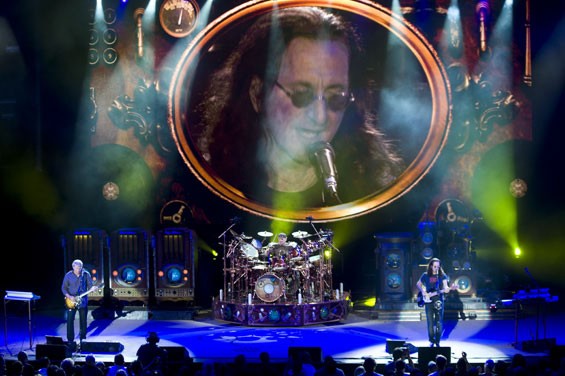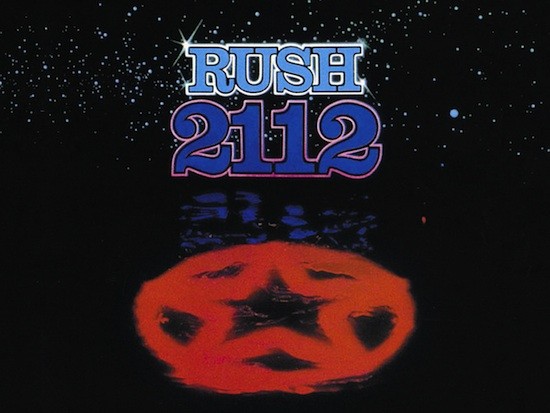
We celebrate the dorkiest of dorky music fans by dubbing today as Rush Day, All Day: It is, after all, 2-1-12.
Both the album and the song, released in 1976, is actually about the year 2112. For many, the fact that 2112 is considered the definitive Rush album is reason enough to celebrate it. After the jump, everything you ever needed to know about the song–from gear to inspiration to art work.
]
1. Plot: In the year 2062, a galaxy-wide war results in the union of all
planets under the rule of the Red Star of the Solar Federation. By 2112,
the world is controlled by the “Priests of the Temples of Syrinx,” who
determine the content of all reading matter, songs, pictures–every
facet of life.
A man discovers an ancient guitar and learns to play his own music.
Thinking he has made a wonderful discovery that will be a boon to
humanity, he goes to present the guitar to the priests of the Temples,
who angrily destroy it and rebuke him for unearthing one of the “silly
whims” that caused of the collapse of the previous civilization. He goes
into hiding and dreams of a world before the Solar Federation. Upon
awakening he becomes distraught and commits suicide. As he dies, another
planetary battle begins resulting in the ambiguous ending “Attention
all planets of the Solar Federation: We have assumed control.” (This
spoken section was created by Geddy Lee and Alex Lifeson reportedly
“messing around with a tape recorder.”) (via Wikipedia)
2. Gear: The “sci-fi” sounds in the beginning of the song were created using an ARP Odyssey synthesizer and an Echoplex tape delay.

4. Art: Hugh Syme, who designed 2112's cover, said in a 1983 issue of Creem: “What I did do with that particular cover was read their lyrics, and understand that there is a good force and a bad force: the good force was music, creativity, and freedom of expression-and the bad force was anything that was contrary to that. “The man is the hero of the story. That he is nude is just a classic tradition … the pureness of his person and creativity without the trappings of other elements such as clothing. The red star is the evil red star of the Federation, which was one of Neil's symbols. We basically based that cover around the red star and that hero. “Now, that hero and that kind of attitude about freedom of expression and the band having that kind of feeling … at the time, it never ready occurred to me, to be honest with you, that they would adopt it quite so seriously as a logo. Because it's appeared just about everywhere, thereafter.”
5. Song Movement:
The song can be divided into 1) an Overture, where the protagonist is introduced; 2) The Temples of Syrinx, which control all information (kind of like the Internet, if SOPA comes to life!) 3) Discovery, where the guitar is found; 4) Presentation, where the guitar music is played before priests; 5) Oracle, where the protagonist goes home with a vision of the past and the future. 6) Soliloquy, the protagonist despairs his life because of what happened and kills himself. 7) The Grand Finale is an ambiguous, upbeat instrumental that Peart has said signifies “the Elder Race successfully overthrowing the Solar
Federation.”
Like Heard Mentality on Facebook and follow us on Twitter at @ocweeklymusic!

